Stackdriver
This document will help you integrate Stackdriver with Squadcast.
Stackdriver offers monitoring of a wide variety of metrics, dashboards, alerting, log management, reporting, and tracing capabilities.
Route detailed events from Stackdriver to the right users in Squadcast.
How to integrate Stackdriver with Squadcast
In Squadcast: Using Stackdriver as an Alert Source
(1) From the navigation bar on the left, select Services. Pick the applicable Team from the Team-picker on the top. Next, click on Alert Sources for the applicable Service
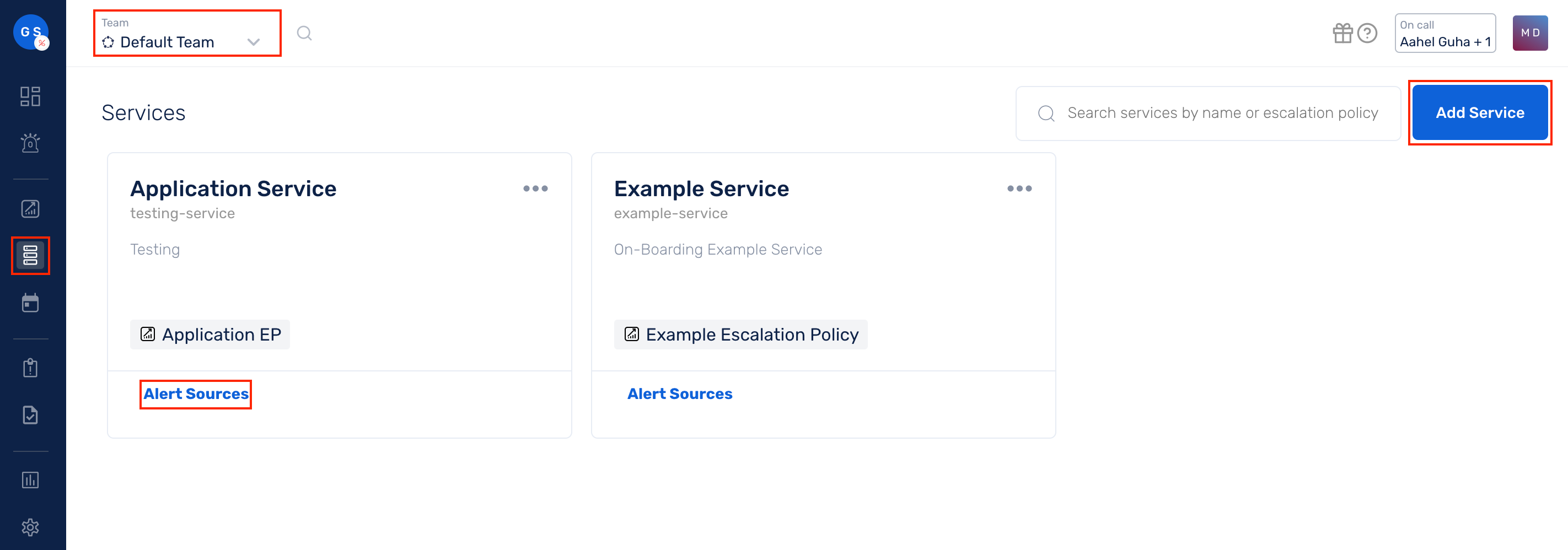
(2) Search for Stackdriver from the Alert Source drop-down and copy the Webhook URL
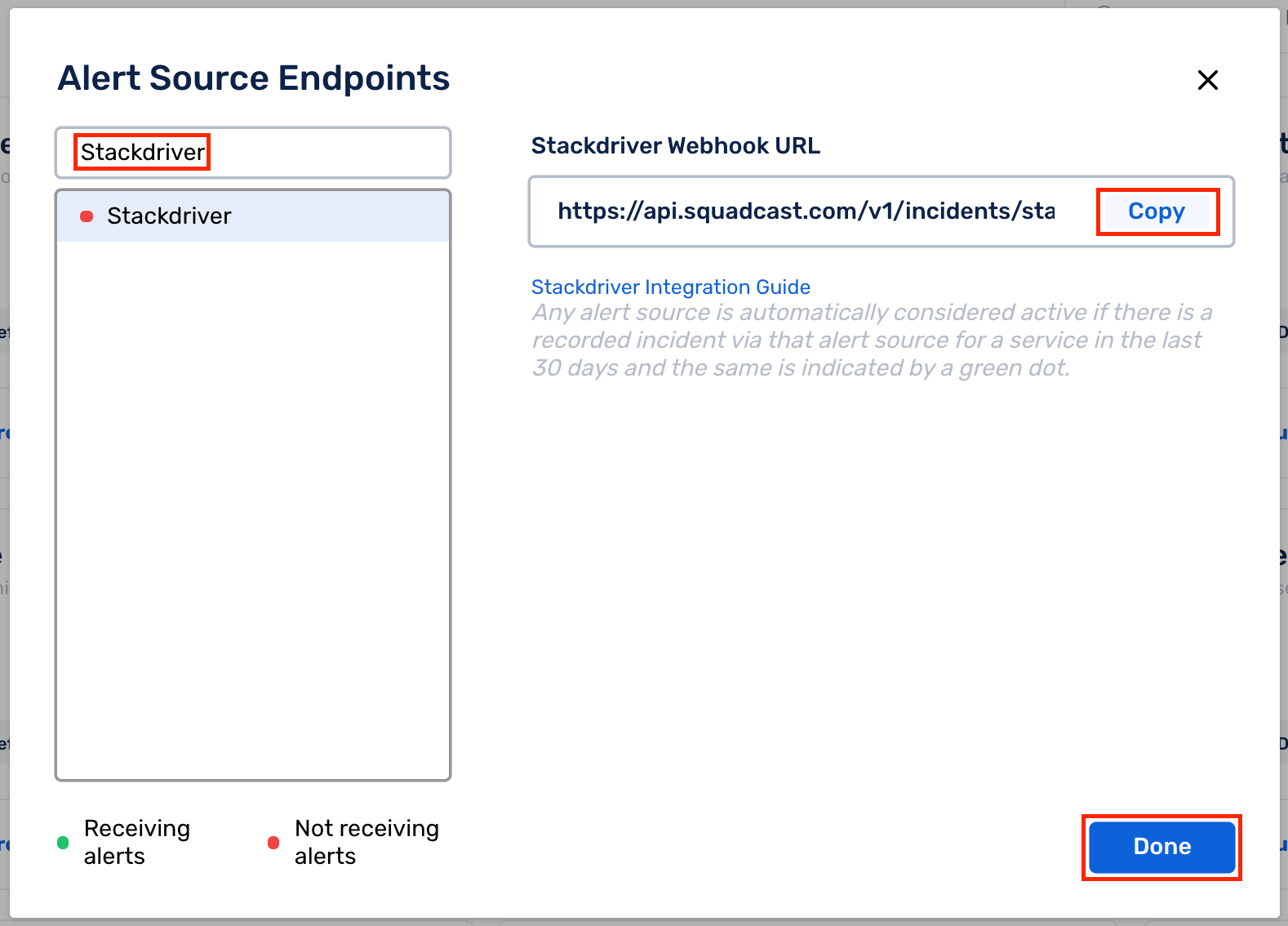
For an Alert Source to turn active (indicated by a green dot - Receiving alerts against the name of the Alert Source in the drop-down), you can either generate a test alert or wait for a real-time alert to be generated by the Alert Source.
An Alert Source is active if there is a recorded incident via that Alert Source for the Service in the last 30 days.
In Stackdriver: Adding a Webhook for Squadcast
Login to your Google Cloud console. From the sidebar on the left, scroll to find Operations and select Monitoring
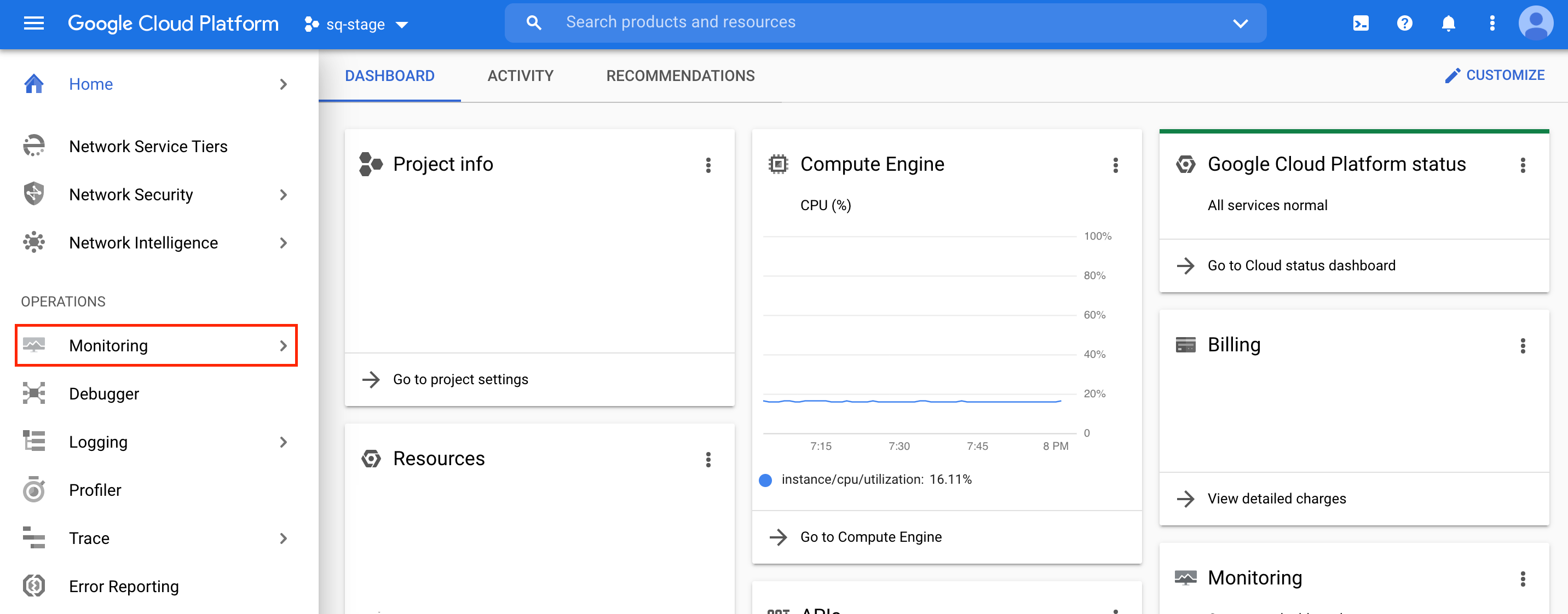
Adding a Notification Channel - Webhooks
(1) From the left sidebar, select Alerting
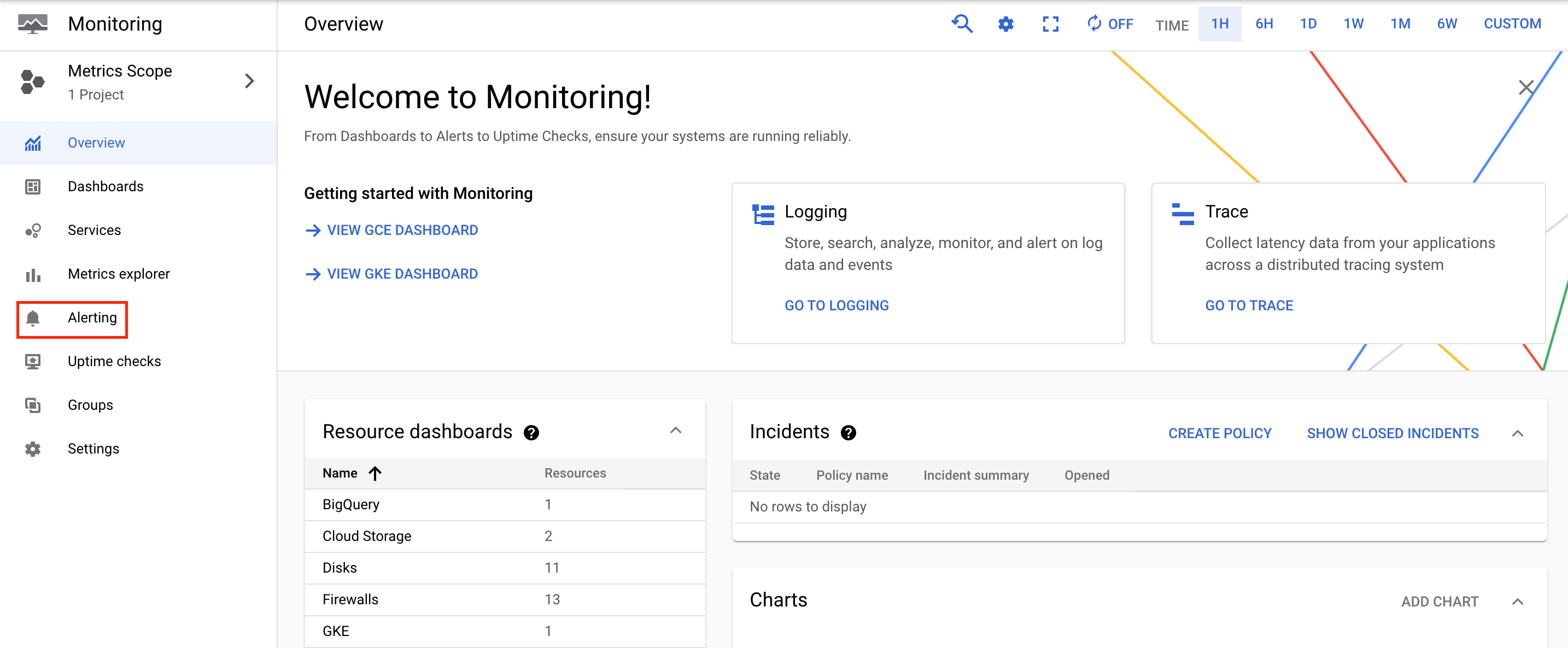
(2) Select Edit Notification Channels
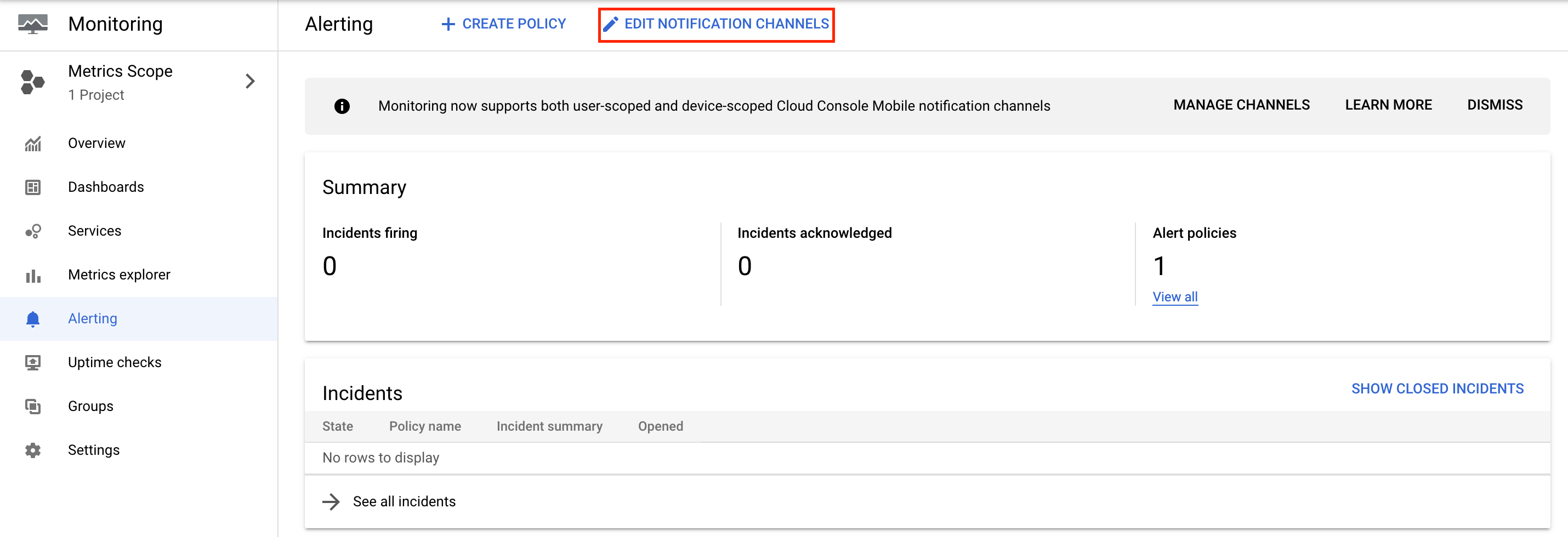
(3) Scroll until you find Webhooks. Here, click on Add New to add the Squadcast Webhook

(4) Here, paste the previously copied Webhook from Squadcast under Endpoint URL. Give the Webhook a meaningful Displaye Name.
Things to keep in mind here:
- Do not enable the checkbox for using HTTP Basic Auth
- When you paste the Webhook from Squadcast in Endpoint URL field, ensure you remove the additional
https://that gets added
(5) Click on Test Connection and check to see if an incident has been created for the incident in Squadcast
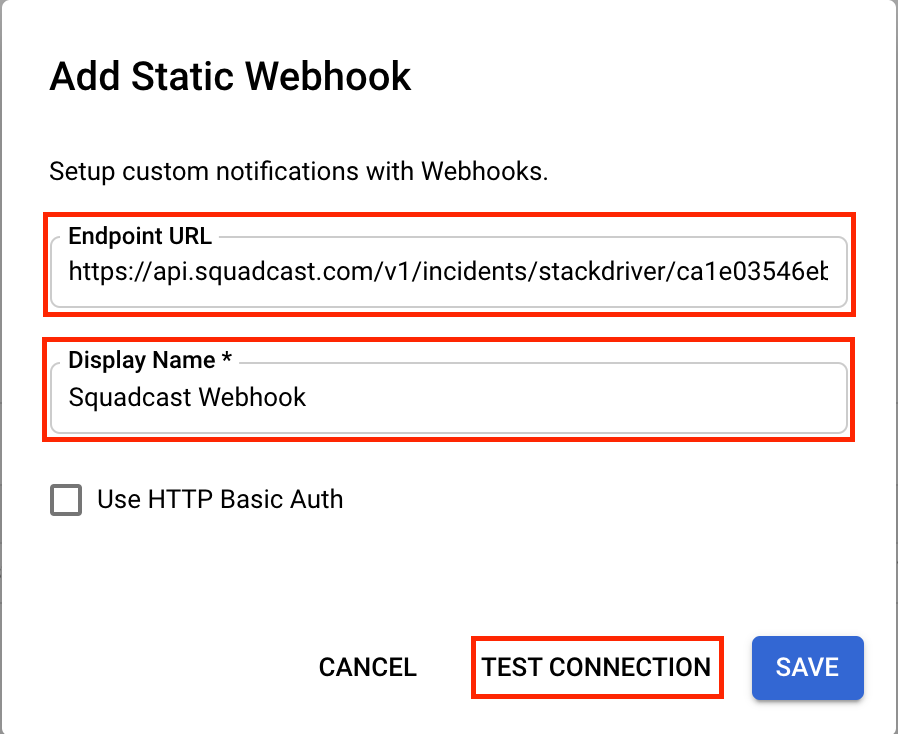
(6) Finally, click on Save
Setting up Alerting Policies
(1) Within the Alerting page, to add a Policy, click on either + Create Policy on the top or Add Policy in the bottom

(2) Now, Add Condition for your Policy. In that page, you can set up the metrics that you would wish to monitor and their thresholds, along with the resources
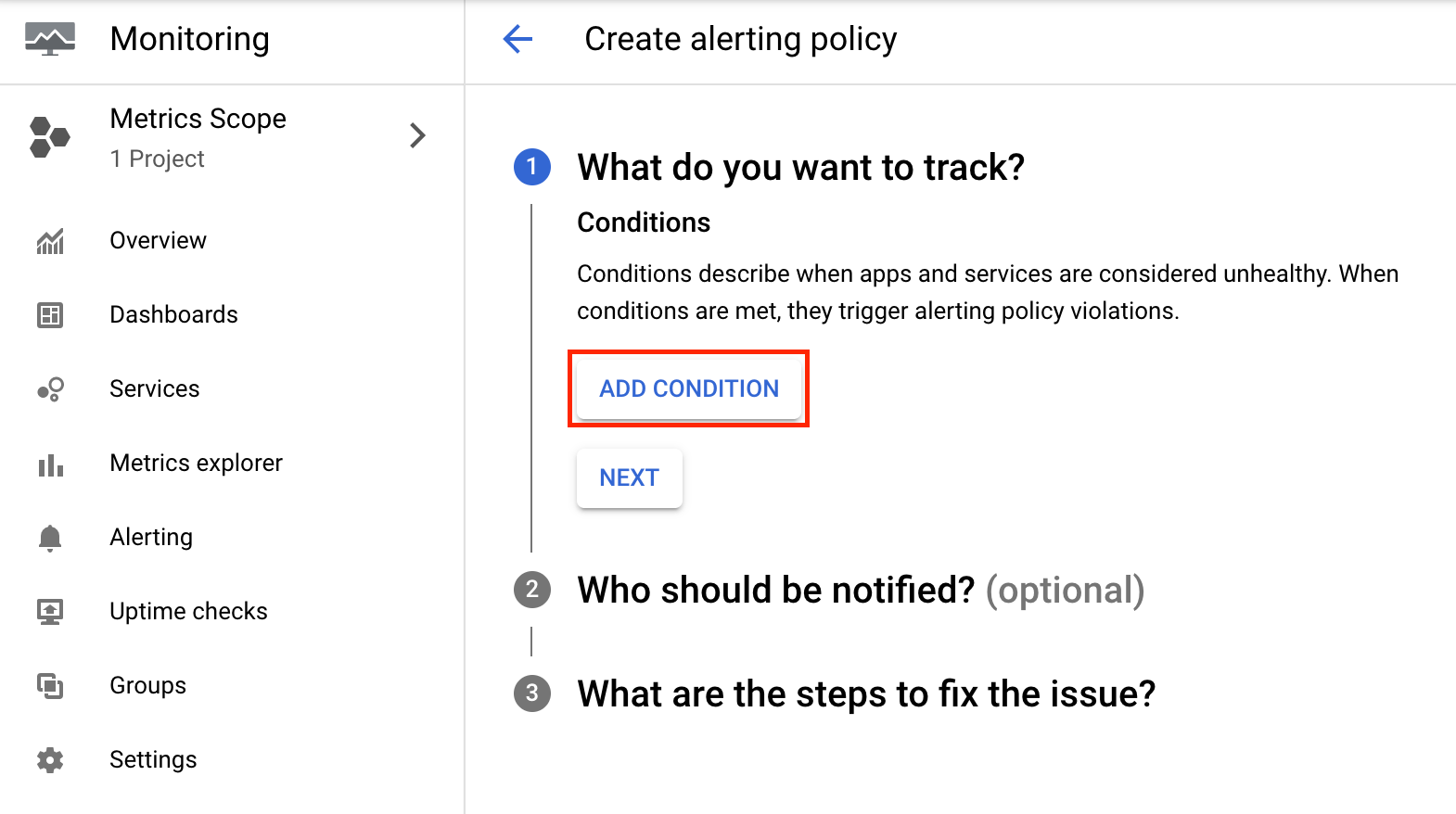
(3) Once that is done, select Next
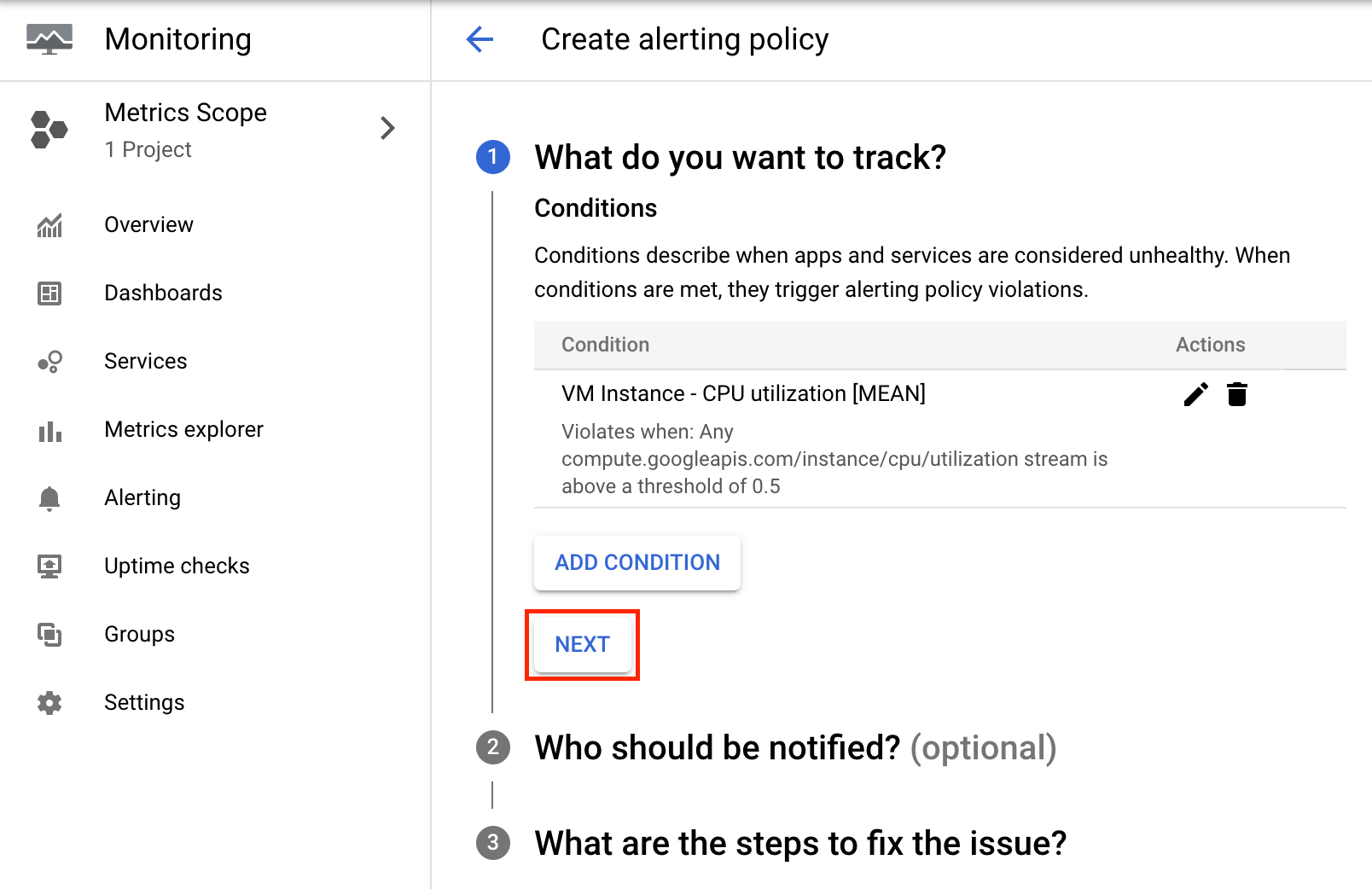
(4) In the Notification Channels dropdown, select the Webhook previously configured for Squadcast and select OK
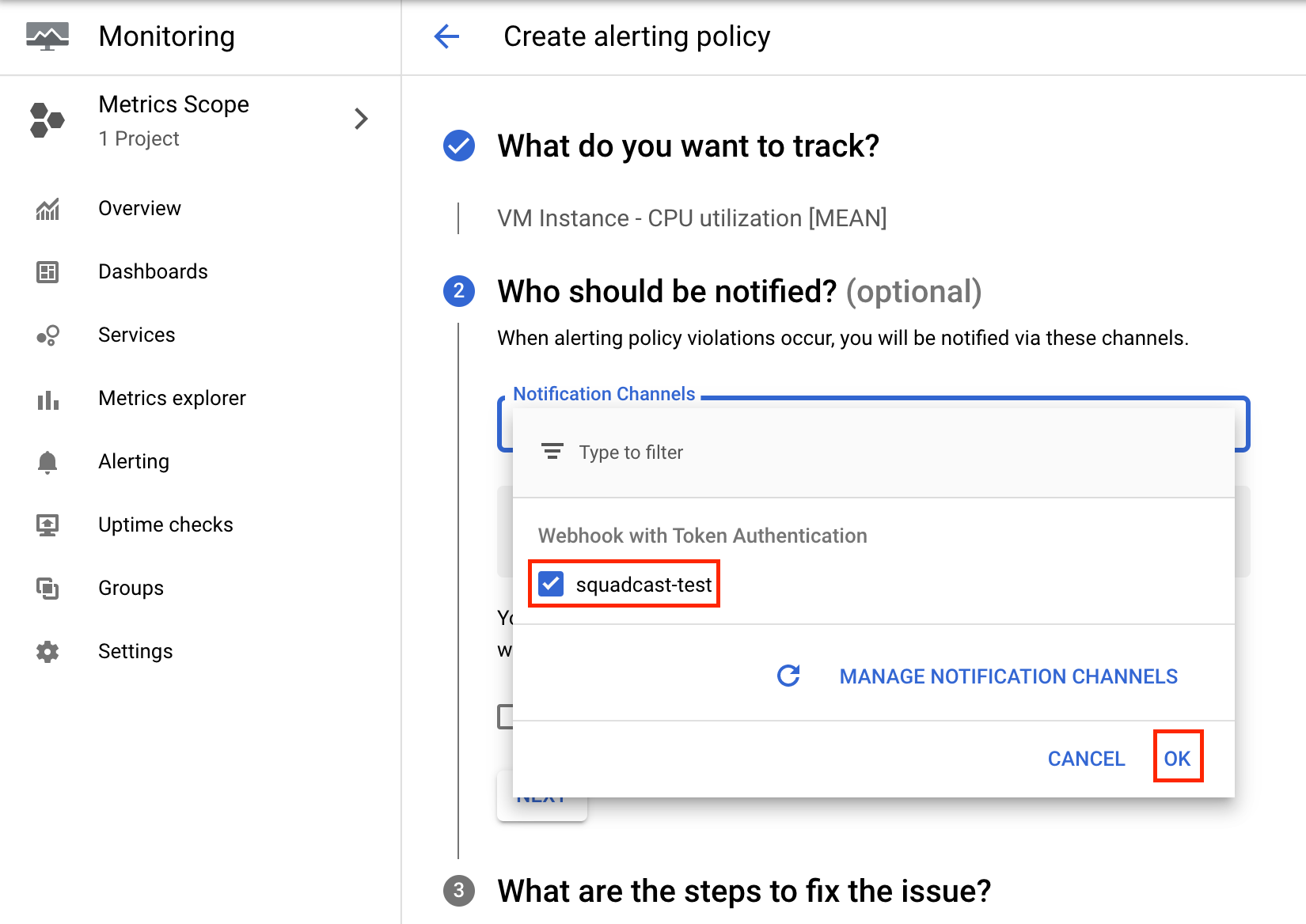
(5) Enable the checkbox as shown in the screenshot to receive Incident Resolutions signals as well. Then, select Next
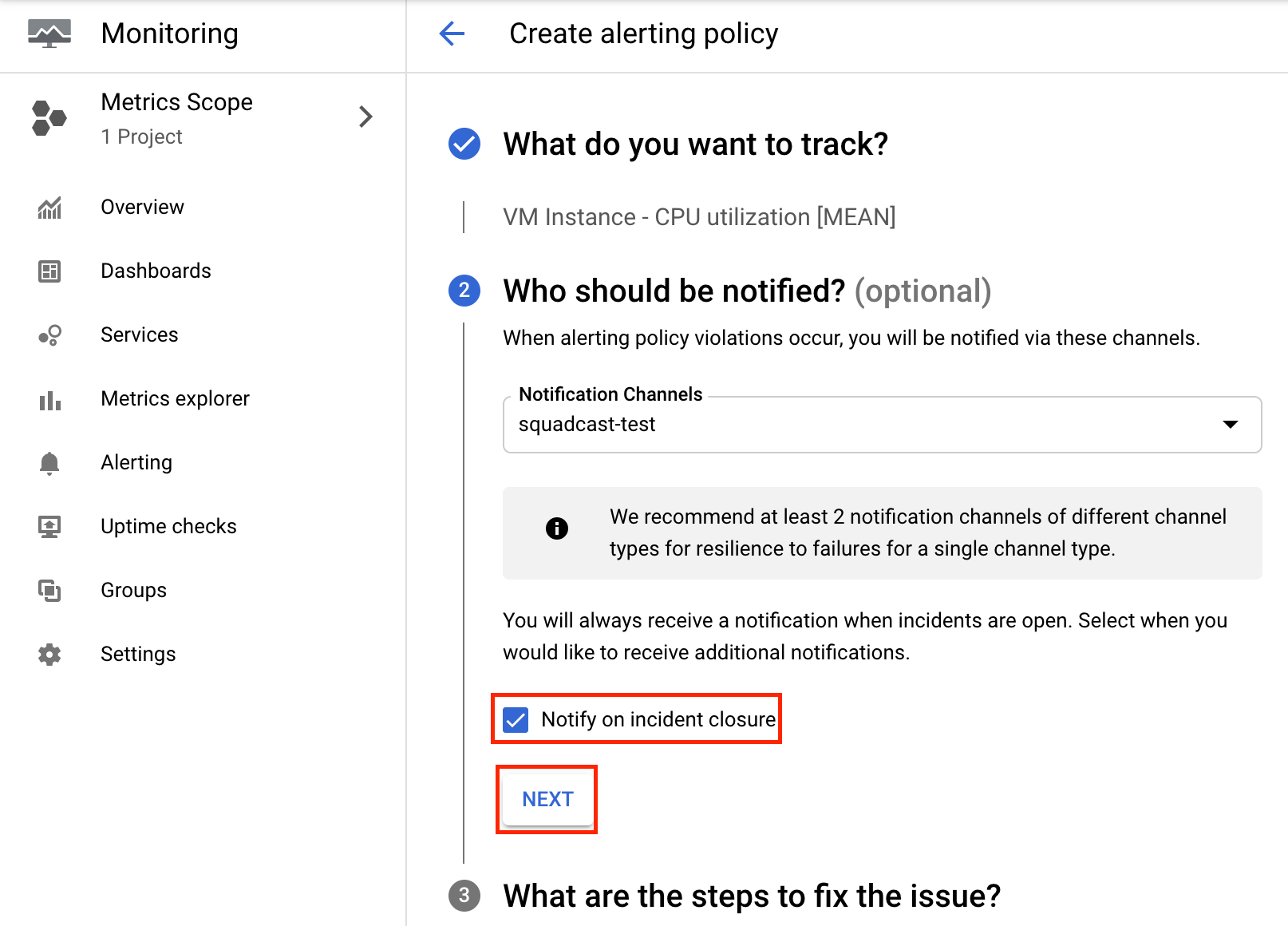
(6) Here, add a meaningul Alert Name, add Optional Documentation and click on Save to create your Alerting Policy
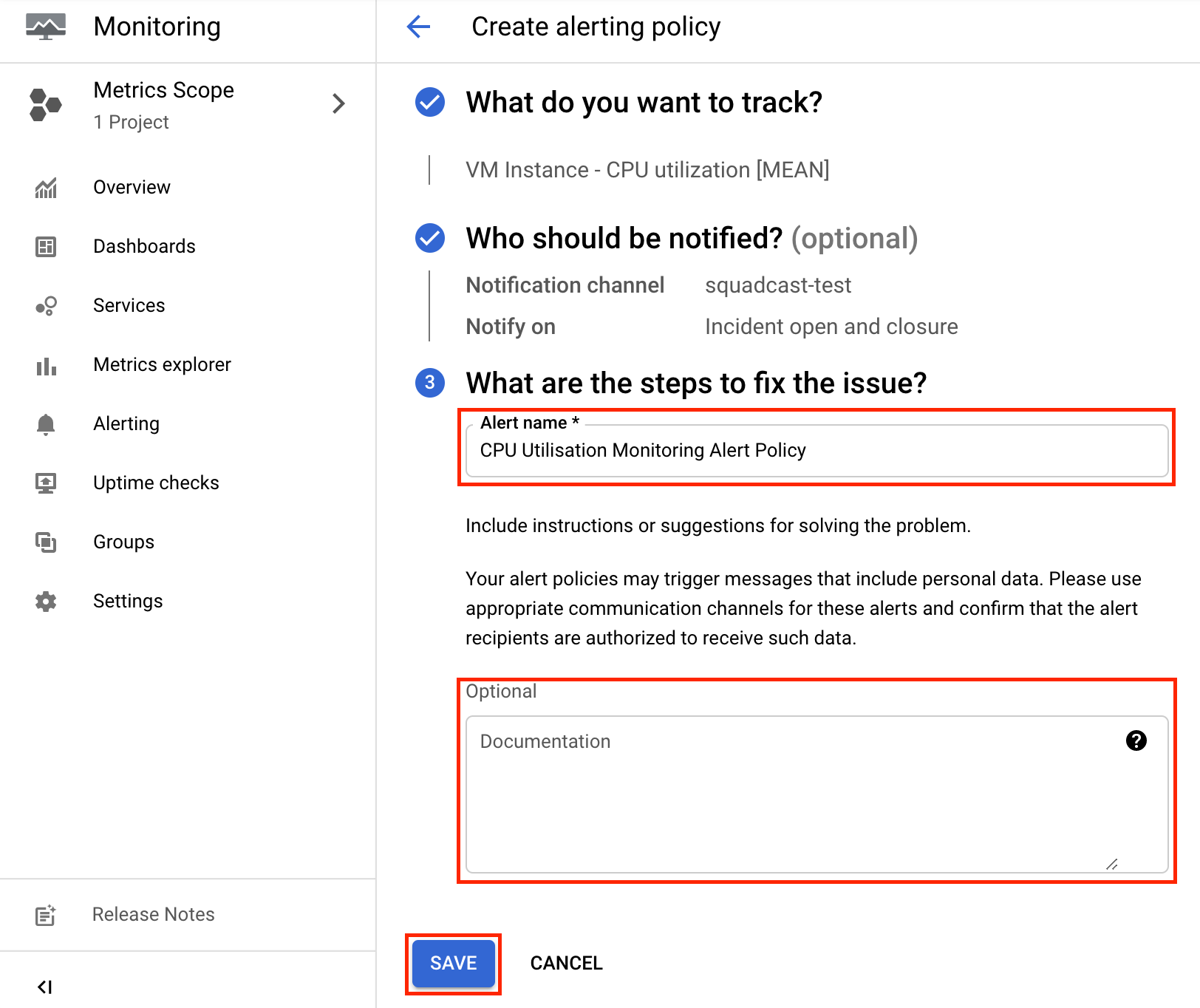
(7) Once everything is done, in the Policies page, you will be able to see the previously added Alerting Policy. Ensure that the Alerting Policy toggle is Enabled to on
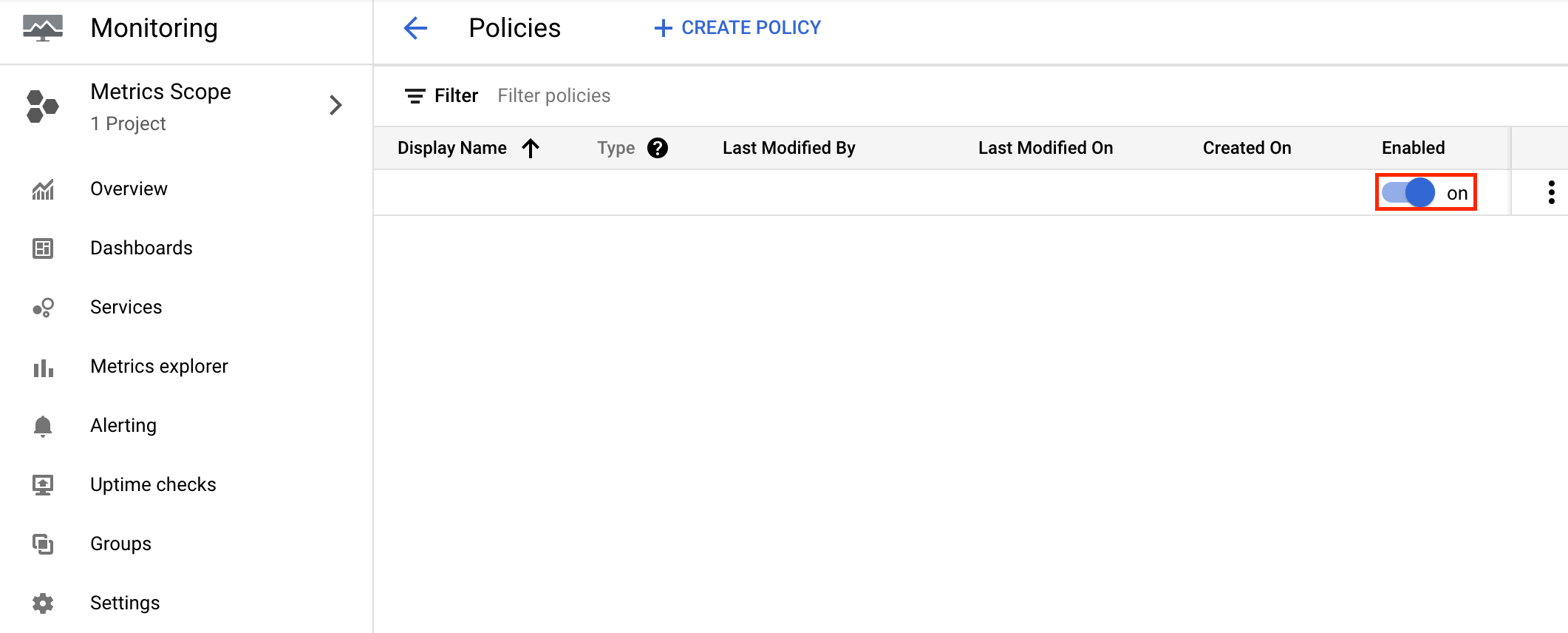
That is it, you are now good to go! Whenever an alert is generated in Stackdriver, an incident will be created for the same in Squadcast.
Q: Does this integration support auto-resolution of incidents in Squadcast?
A: Yes, this integration **supports auto-resolution of incidents in Squadcast**, meaning that whenever alerts get resolved in Stackdriver, the corresponding incidents will be automatically resolved in Squadcast as well. If you do not enable the checkbox to recieve Incident Resolution signals, then your Squadcast incidents will not be auto-resolved when alerts in Stackdriver are resolved.